Touring the hidden Tenderloin
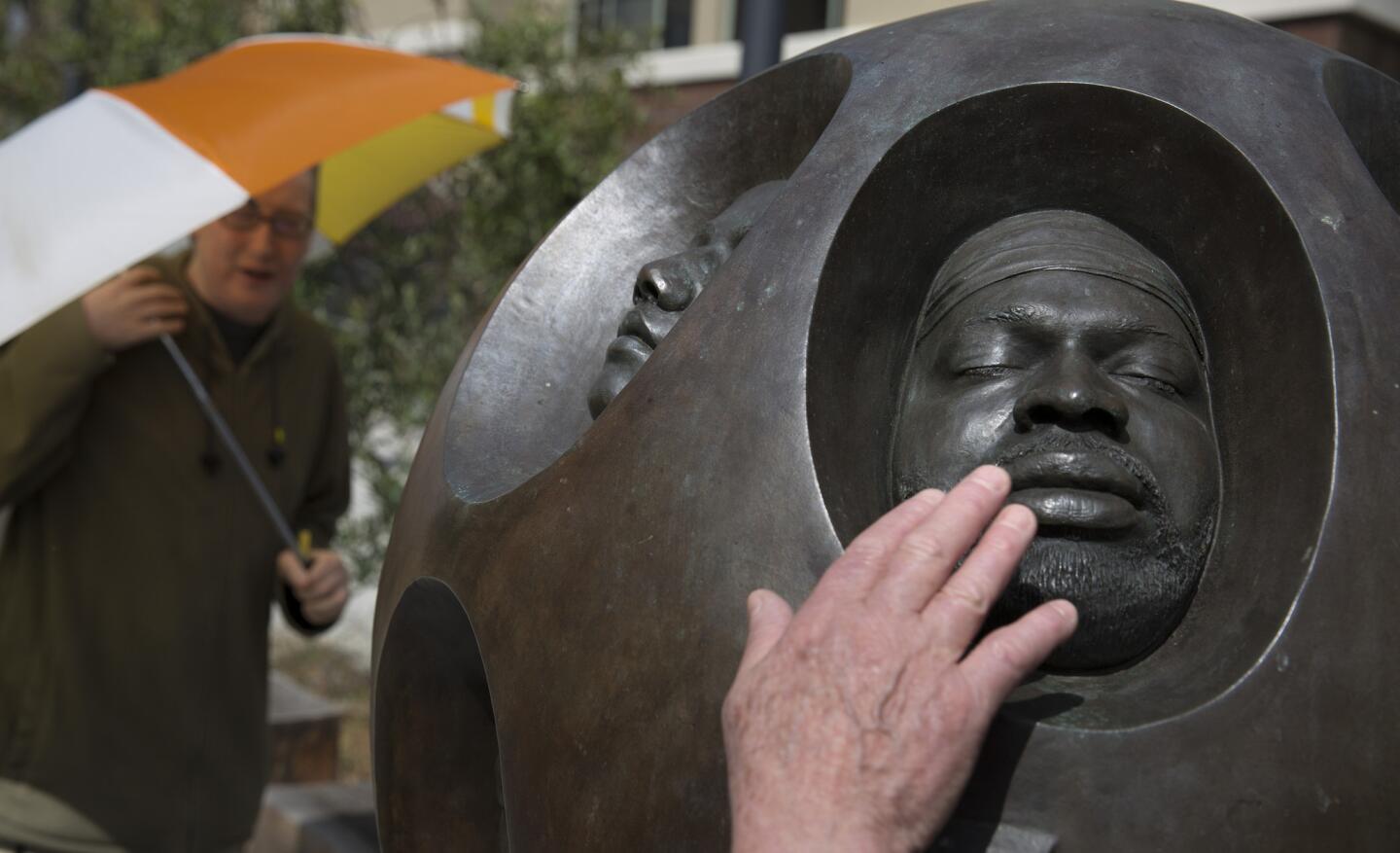
Paul Throop, left, tours Boeddeker Park in the Tenderloin neighborhood. Throop, 44, has lived in the area for 13 years at a board-and-care.
(Brian van der Brug / Los Angeles Times)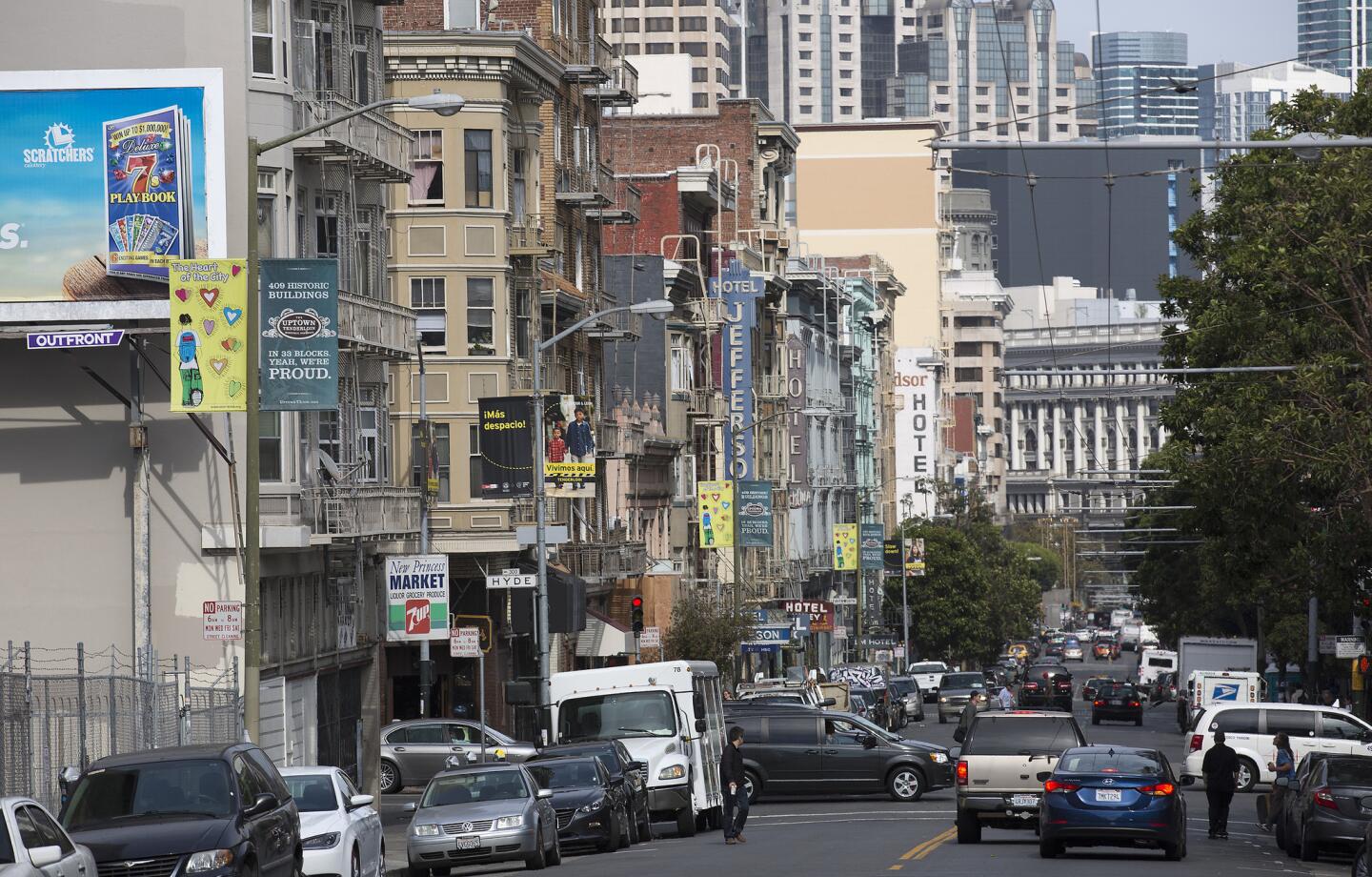
A view toward Eddy and Hyde streets in the Tenderloin district. On display inside the small Tenderloin Museum are matchbooks of the bars, dance halls and cafes that once flooded the neighborhood, spurring scandal over women who lived on their own and wanted to eat and drink in mixed company.
(Brian van der Brug / Los Angeles Times)
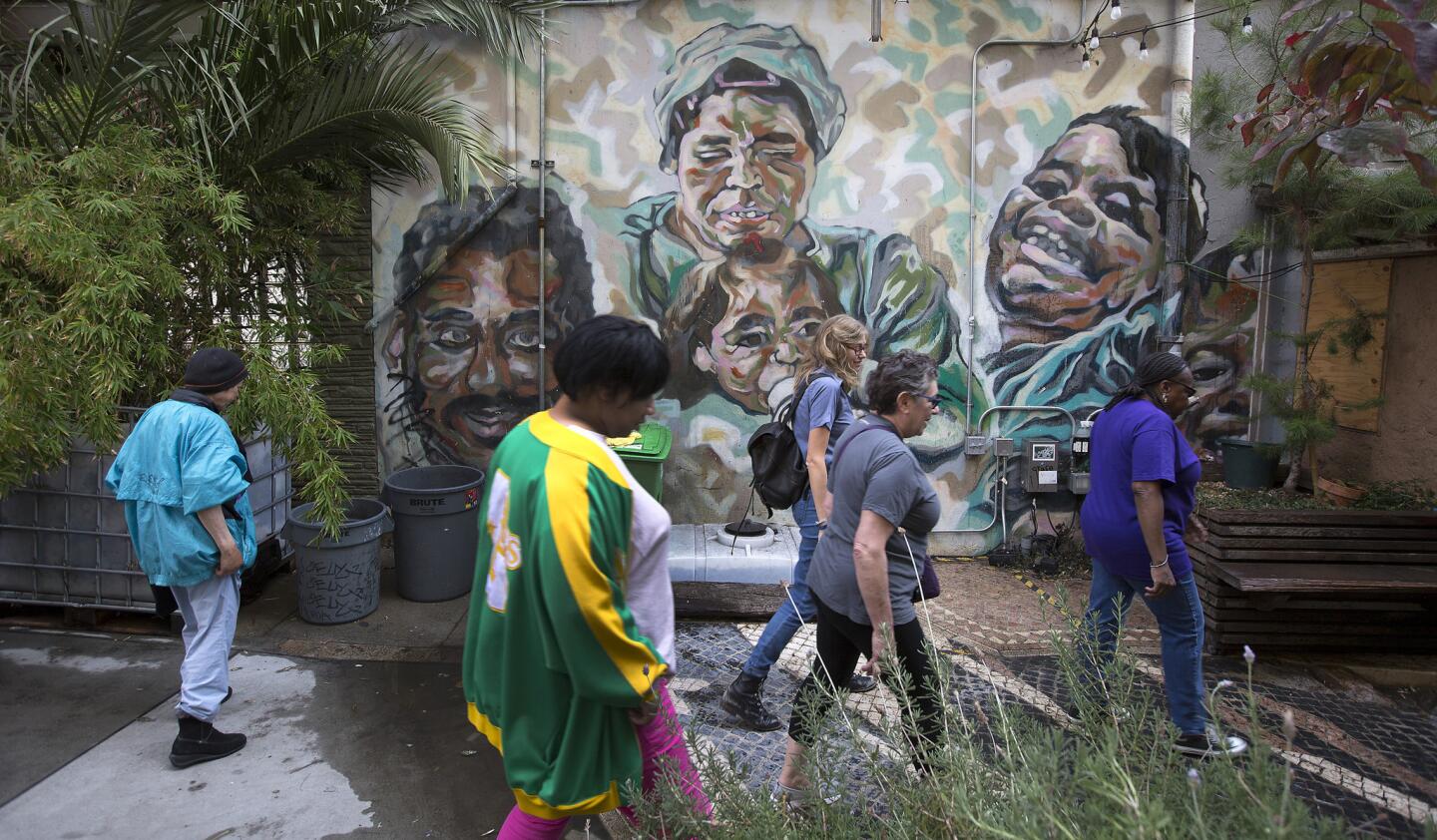
On Ellis Street, Kathy Looper leads a small group on a tour of a project bearing the tongue-in-cheek name Tenderloin National Forest. Long a barren, trash-strewn alley, it has been transformed over the last decade by a nonprofit arts organization into a lush garden with koi ponds, mature trees and a pizza oven.
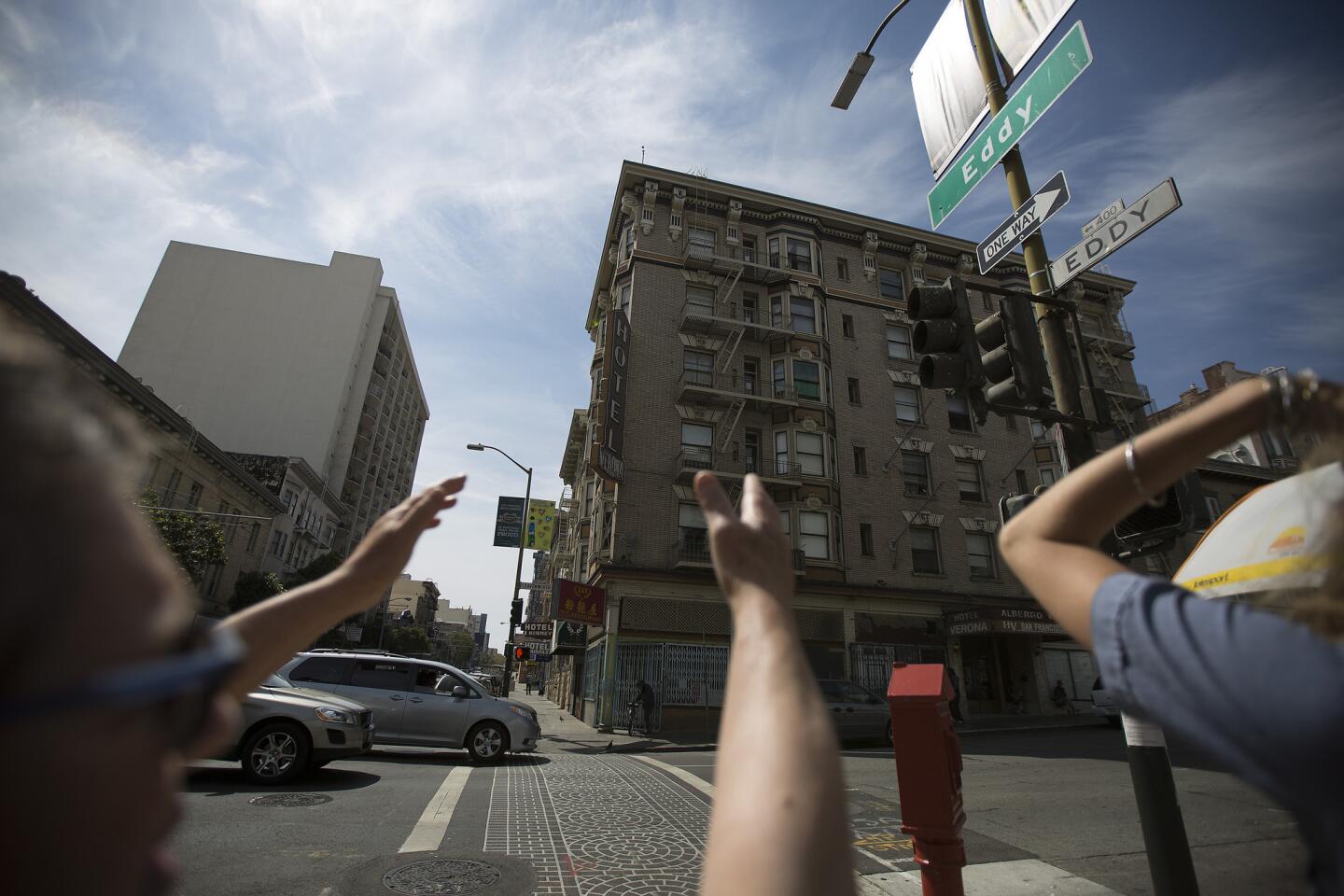
Kathy Looper, left, leads a small group on a tour of San Francisco’s Tenderloin, known to many for its homeless and impoverished residents, single-resident-occupancy hotels and the needles and human waste that litter the sidewalks. But there is a hidden Tenderloin, with a rich past and a surprising present; it is that history that the Tenderloin Museum and its walking tours seek to illuminate.
(Brian van der Brug / Los Angeles Times)
Advertisement
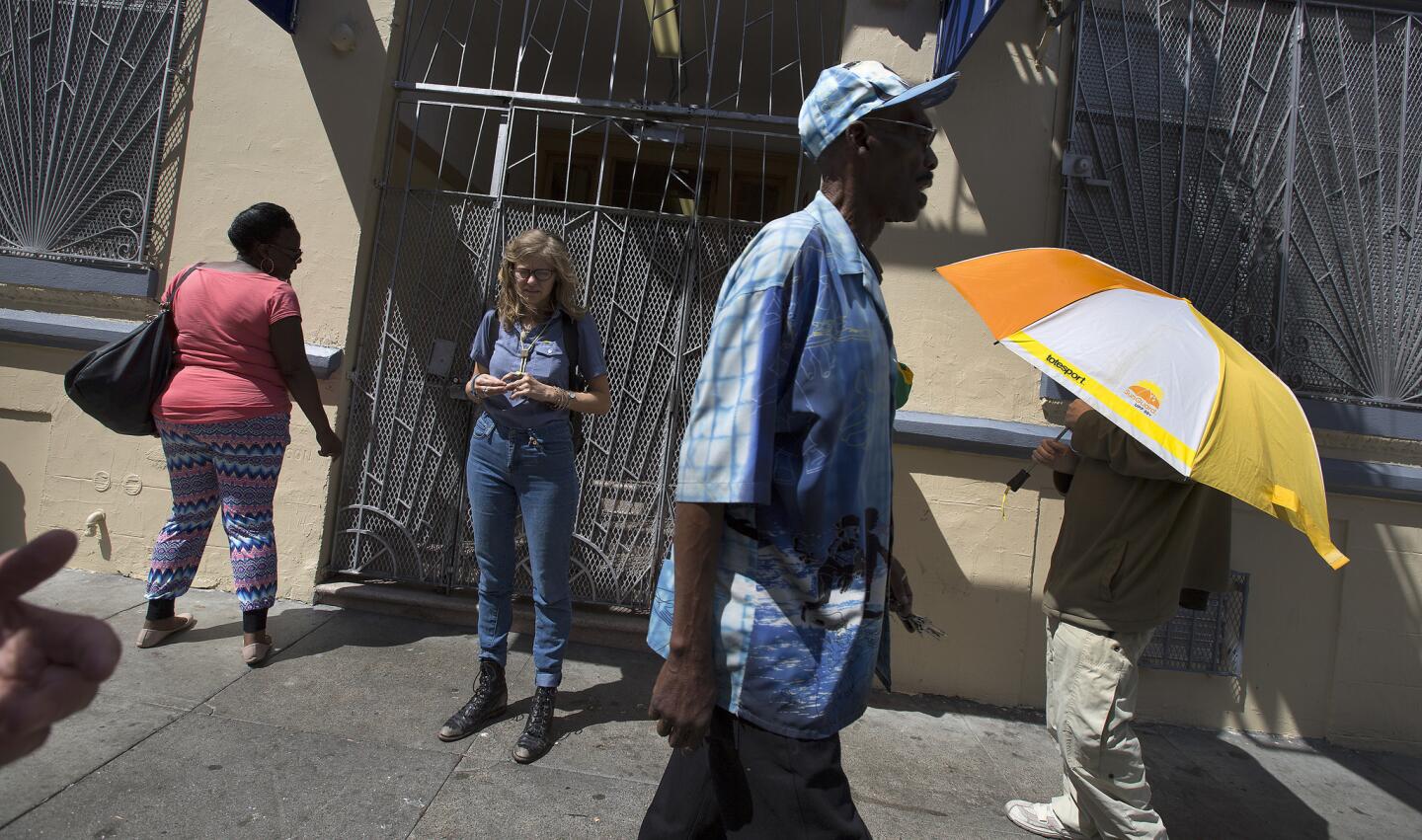
Rebuilt in decorative pale masonry to convey a “city of light” after the 1906 earthquake and fire, the Uptown Tenderloin — between the Civic Center and touristy Union Square — now boasts 409 buildings on the National Registry of Historic Places.
(Brian van der Brug / Los Angeles Times)
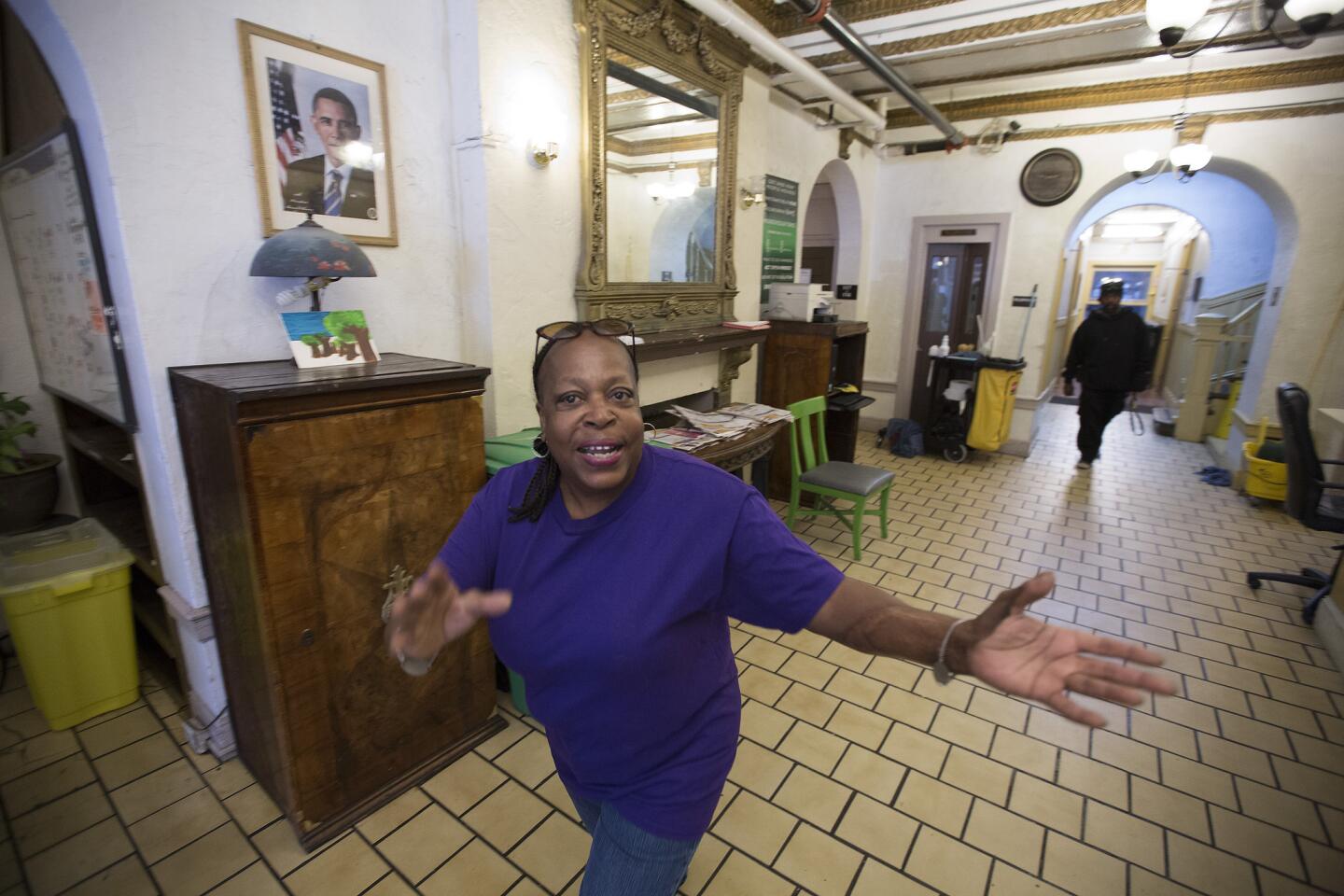
Brenda Washington shows off the lobby of the Jefferson Hotel on a tour of the Tenderloin. In pricey San Francisco, the Tenderloin — an exclusively low-income neighborhood situated in the center of a major American city — is an increasing rarity.
(Brian van der Brug / Los Angeles Times)
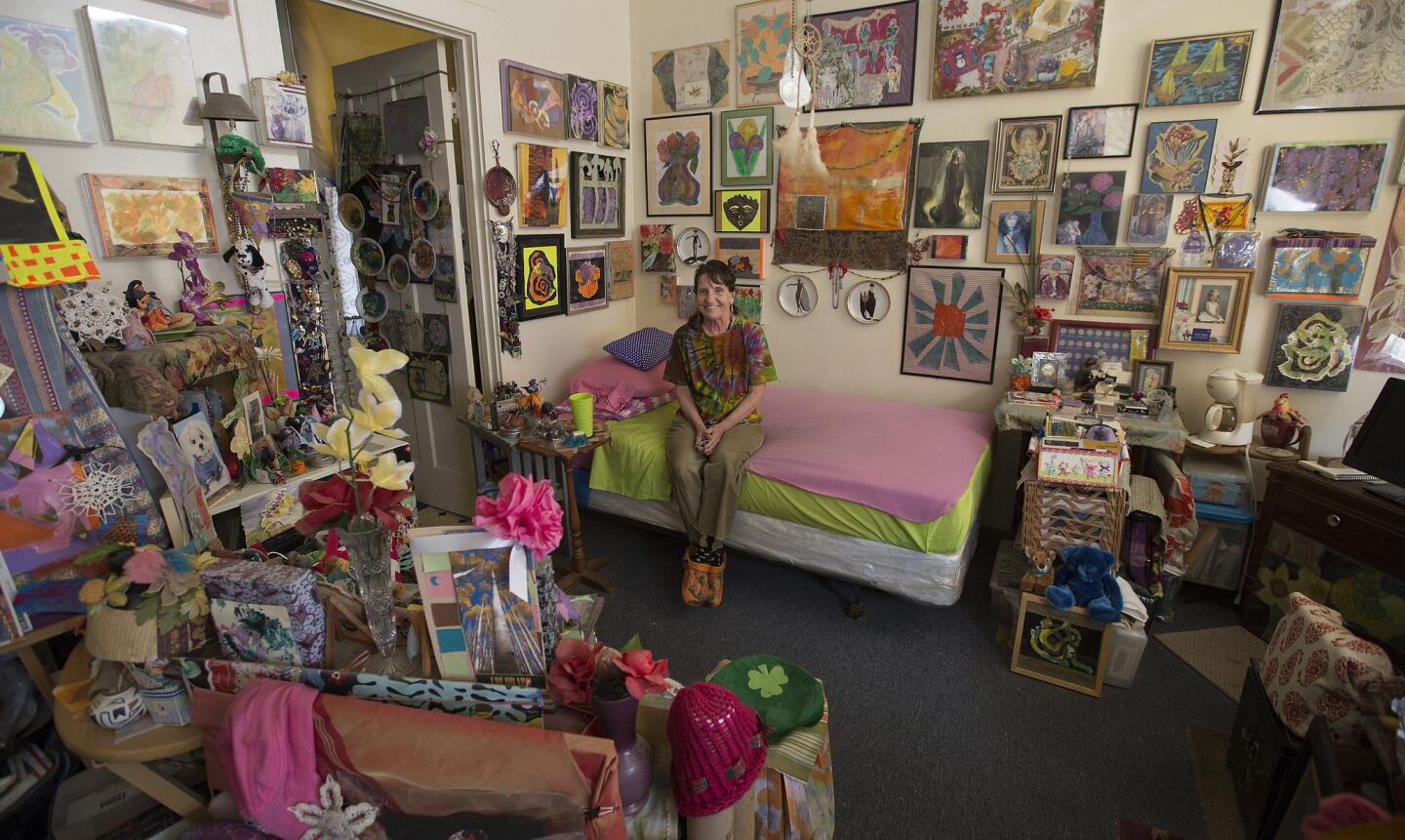
Gayle Wood in her room at the Cadillac Hotel in the Tenderloin. The 70-year-old artist said that the more she walked around the changing neighborhood on a recent day, “the more uncomfortable I felt.”
(Brian van der Brug / Los Angeles Times)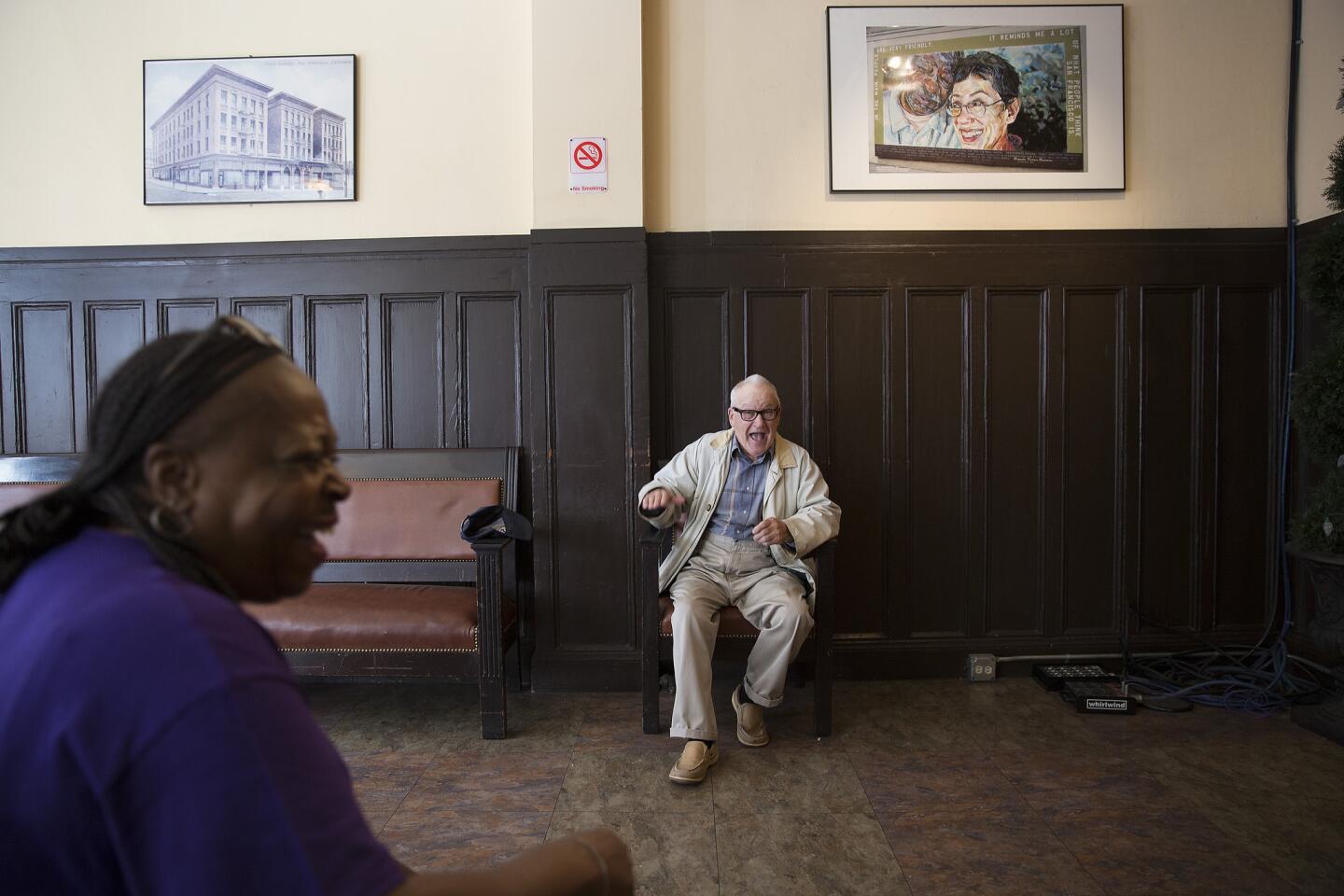
Brenda Washington, left, shares a laugh with Bob Mathena, 90, at the Tenderloin’s Cadillac Hotel. Mathena moved into the hotel in 1966 and never left. “I came with a little suitcase and said, ‘Do you have a room for the night?’ ” Mathena recalled with a laugh. “And I took one.”
(Brian van der Brug / Los Angeles Times)Advertisement
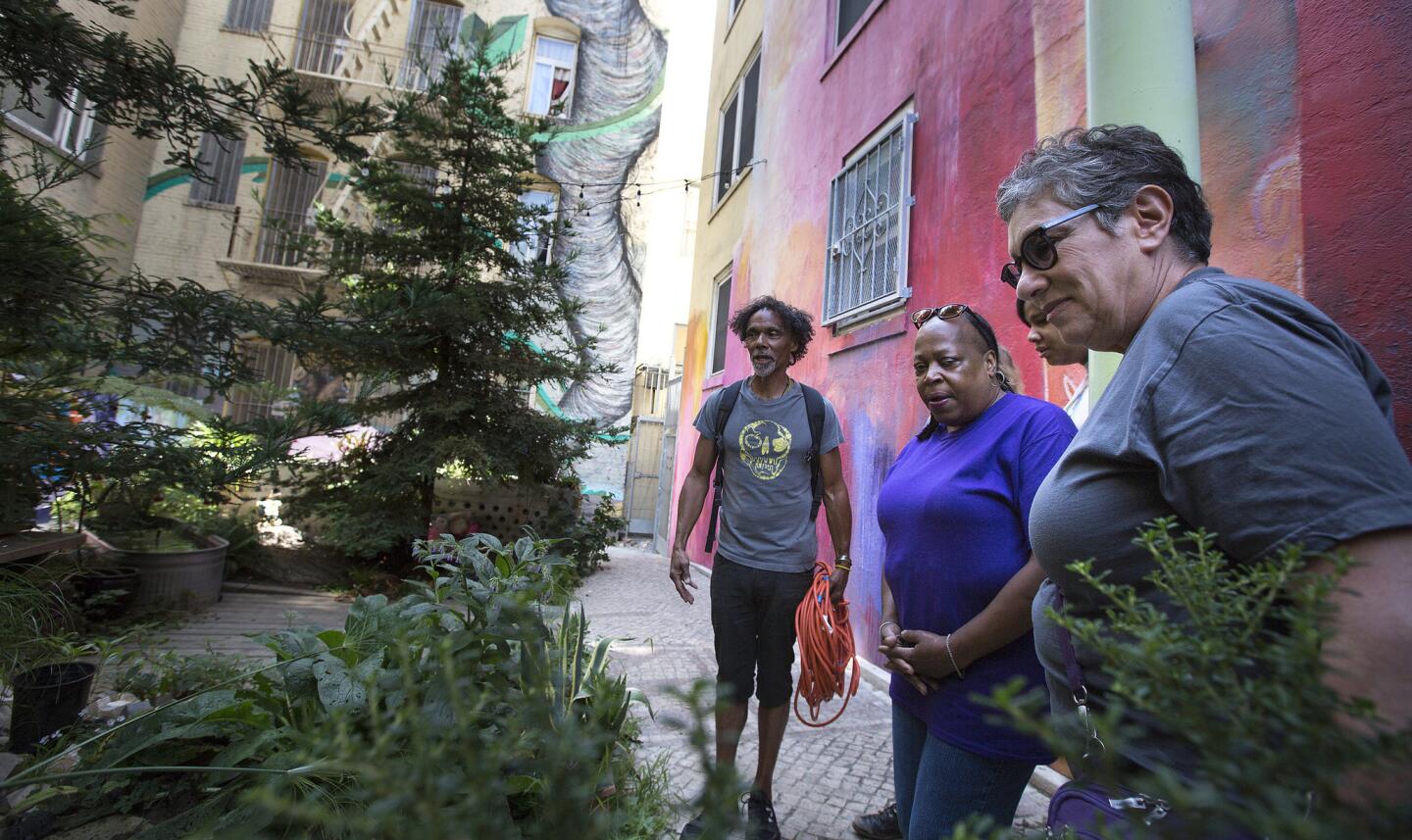
Darryl Smith, left, Brenda Washington and Kathy Looper tour the Tenderloin National Forest. “The Tenderloin was a haven for misfits,” said Looper, who for decades championed the rights of residents at the Cadillac Hotel, which her nonprofit owns and operates just upstairs from the new museum. “If you just didn’t fit in to general society, there was a place for you here. And there still is.”
(Brian van der Brug / Los Angeles Times)
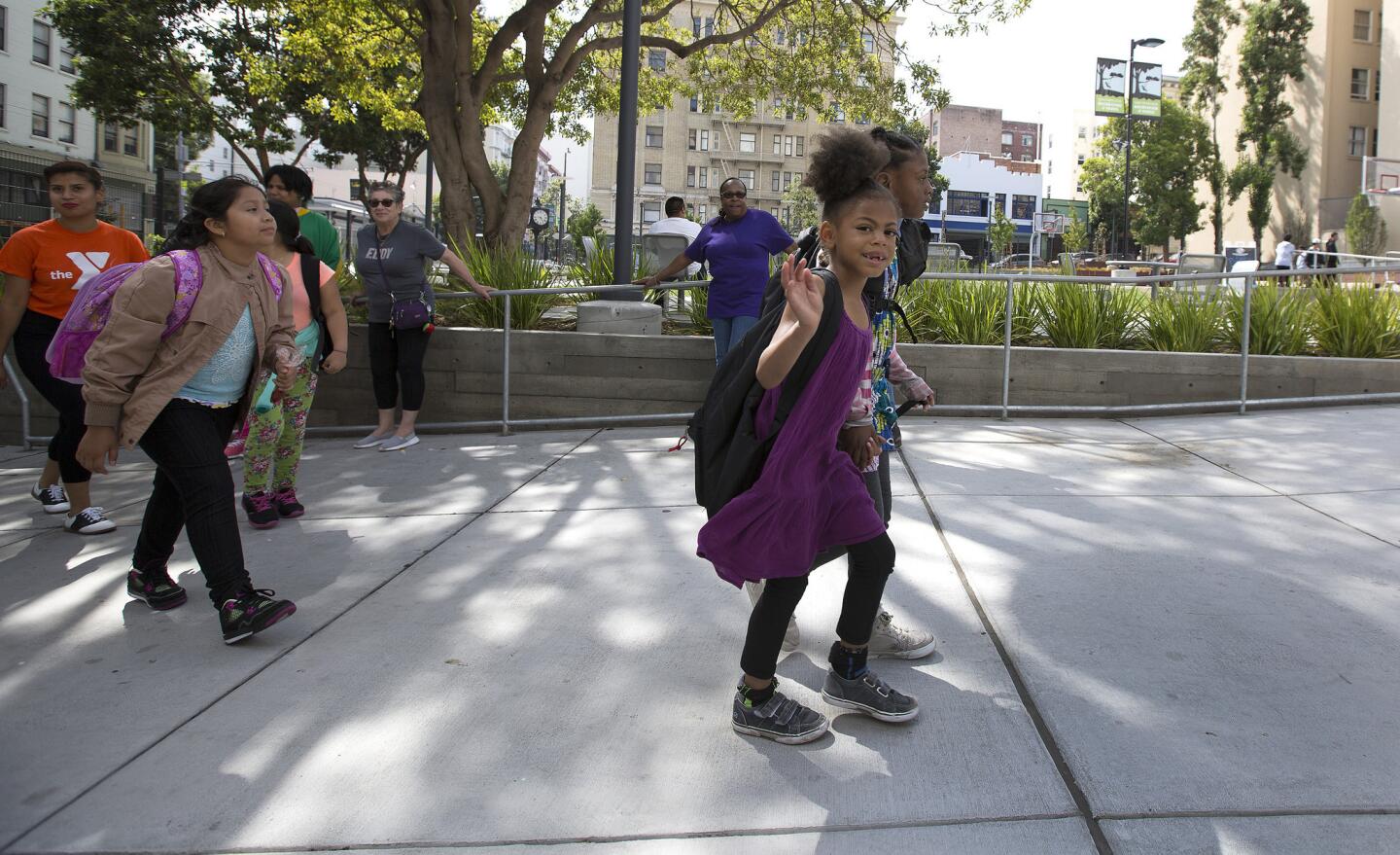
Children arrive for an after-school program at Boeddeker Park in the Tenderloin. For tourists who favor riding a bike with E.T. at Madame Tussaud’s wax museum, the social and political history packed into the Tenderloin Museum and its walking tours through a neighborhood rife with the addicted and the homeless may not sell.
(Brian van der Brug / Los Angeles Times)
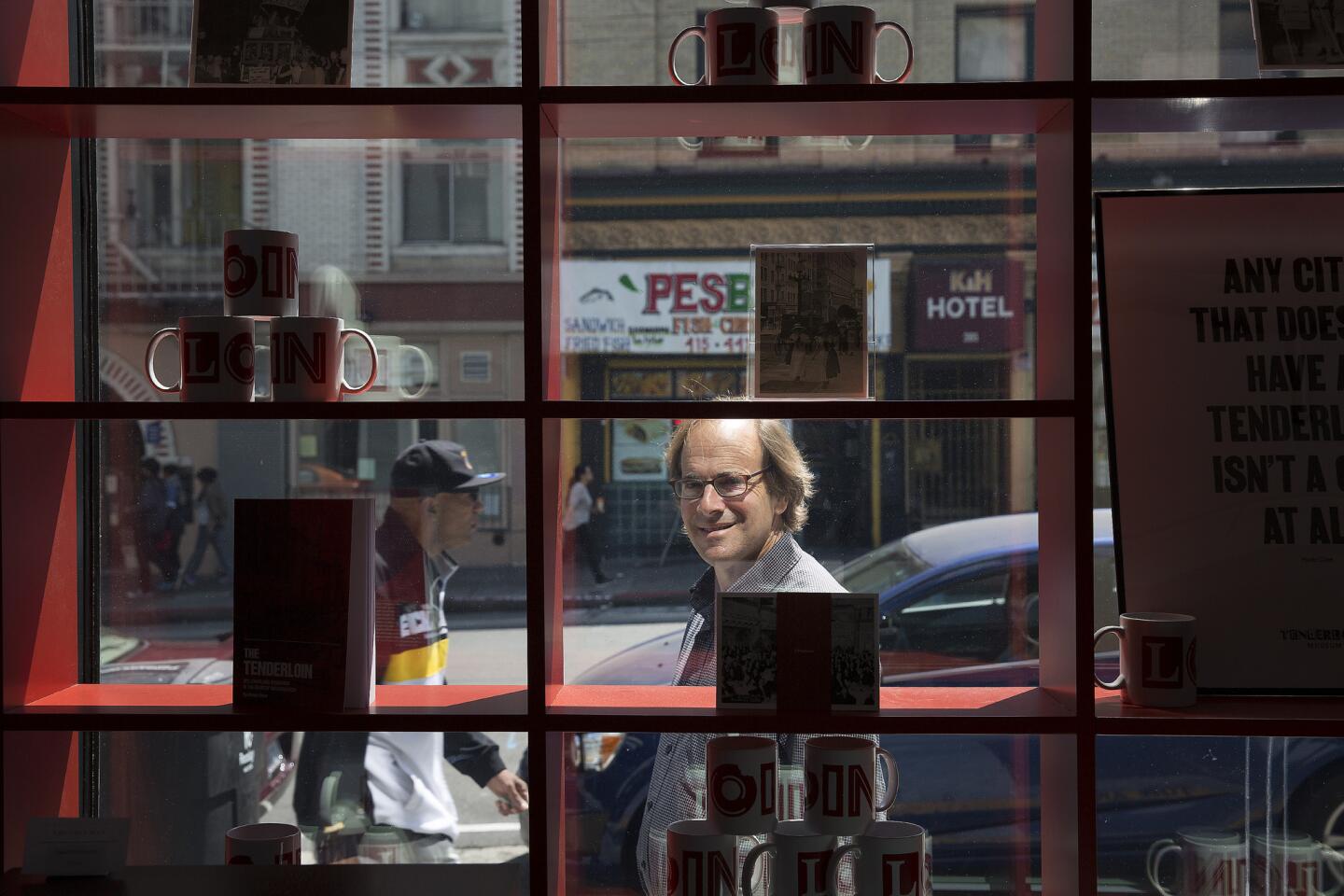
Author Randy Shaw at the Tenderloin Museum. “We hadn’t had a reason to get people to come here. So we thought, ‘Let’s market our history,’ ” said Shaw, who has just released a book, “The Tenderloin: Sex, Crime and Resistance in the Heart of San Francisco.”
(Brian van der Brug / Los Angeles Times)



